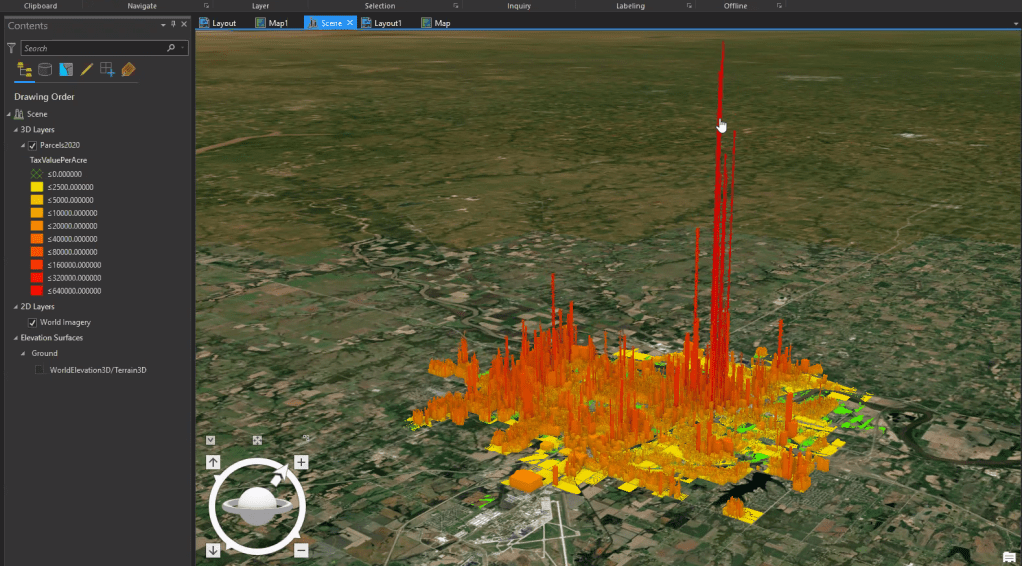During our Strong Towns discussion on Zoom last weekend, we looked over the three-dimensional value per acre map that group members developed. With property tax data from every parcel, we were able to see the highest-performing properties in the city.
In the map below, red properties are bringing in a lot, orange properties are somewhere in the middle, and yellow or green are non-taxable properties.

The most valuable building in Topeka is the Mills Building, at 901 S. Kansas Ave., which brings in more than $640,000 per acre per year for the city. It’s the highest point in the map above, and as you might have guessed, it’s right in the heart of downtown.
The second most valuable property in Topeka is the Hill’s office building at 8th and Van Buren.
Two things these buildings have in common? Office buildings on small lots with high building occupancy.
There are some other prosperous areas in Topeka, but one additional surprise was that the Westboro Mart shopping area at Huntoon and Oakley brings in more taxes per acre than Walmart on Wanamaker.
We also had some surprises looking at residential properties in Topeka. We first looked at the Rockfire development, east and south of Lake Shawnee at about 45th and Croco. These are large homes on cul-de-sacs, with contemporary construction, and large lot sizes. These big, modern houses bring in more than $6,000 per acre per year to the city.

Conversely, homes in the Holliday Park neighborhood, which are mostly a century old, smaller houses, and on much smaller lots – bring in more than $8,000 per acre per year to the city.

So, what did we learn?
Smaller, older homes in the middle of Topeka are more valuable to the city’s bottom line – than new development out on the fringe.
In addition, older buildings in the middle of downtown bring in more money per acre than anything in any other area of Topeka.
We have got to re-consider our development pattern in Topeka and Shawnee County and start making changes.
There’s even more to the value per acre discussion that we have not yet covered, which will show even more contrast between these two neighborhoods. We have only looked at revenue – we have not looked at the city’s costs to keep these properties functional. Because Holliday Park is in the middle of the central street grid, part of the original town, and because lot sizes are small – the city’s liability – its potential cost for maintenance of this neighborhood – is relatively small.
Because Rockfire is far away from sewer processing and water processing, these homes have many miles more of pipe to serve them than do homes in Holliday Park. In addition, there is much more square footage of street serving each house in Rockfire. Even at more than $6,000 per acre, the houses in Rockfire will never generate enough tax revenue in their lifetime to pay for replacement of the street they are built on.
The City of Topeka must do everything it can to encourage continued development in the middle of the city, and to discourage any development out on the edges of town.
The potential gains – or losses – become exponential.
What should we build in the next 50 years in Topeka? And how should we build?
This conversation is continuing in our group, and we would love to have your voice. Join the discussion at the Strong Towns community site, or in our local Facebook group.

You must be logged in to post a comment.